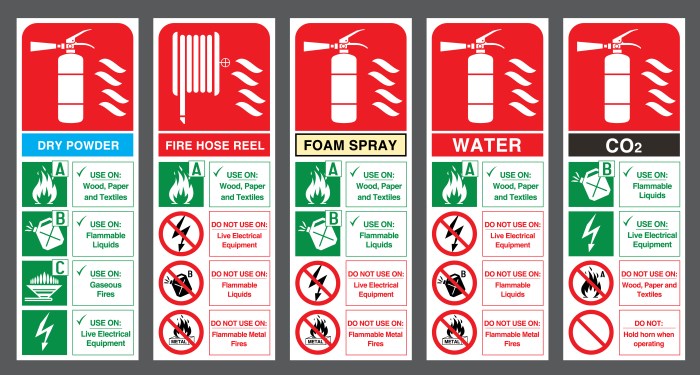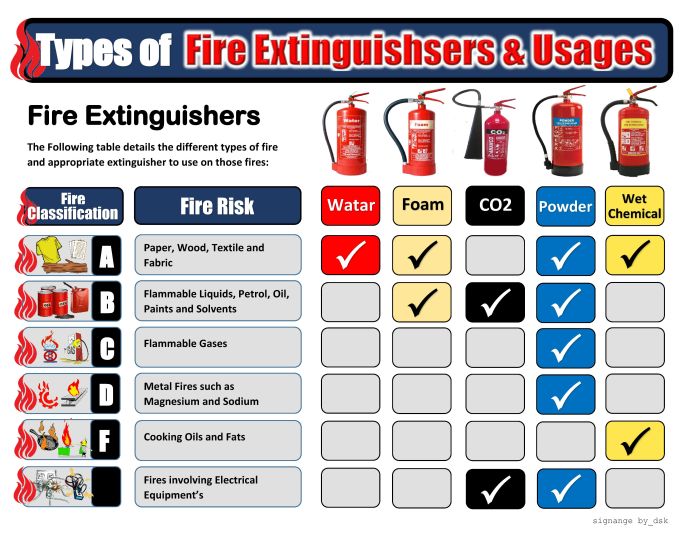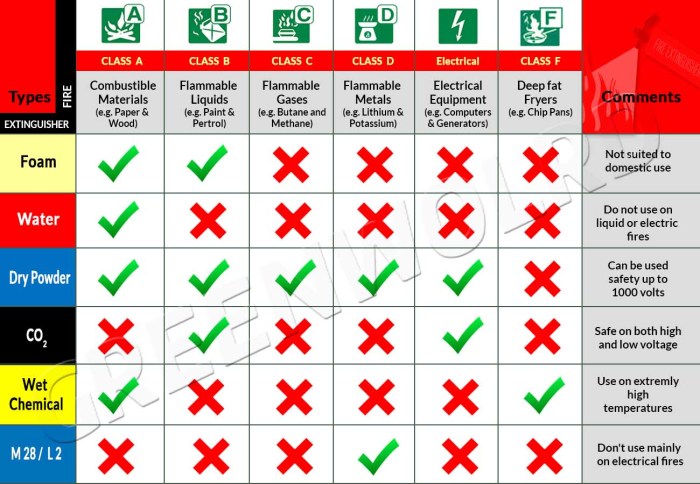The most common types of laboratory fire extinguishers play a crucial role in ensuring the safety of laboratory personnel and safeguarding valuable equipment. This article delves into the various types of fire extinguishers available for laboratory settings, providing a comprehensive overview of their applications, advantages, and limitations.
Fire extinguishers are essential safety devices designed to control and extinguish fires in their early stages. Understanding the different types of fire extinguishers and their suitability for specific hazards is paramount in selecting the appropriate extinguisher for a laboratory environment.
Types of Laboratory Fire Extinguishers

Fire extinguishers are essential safety devices in any laboratory, providing a quick and effective means of suppressing small fires before they escalate. Various types of fire extinguishers are available, each designed to extinguish specific classes of fires. Understanding the different types and their capabilities is crucial for selecting the appropriate extinguisher for a particular laboratory setting.
Table of Extinguisher Types, The most common types of laboratory fire extinguishers
The following table provides an overview of the most common types of laboratory fire extinguishers, their suitable fires, and limitations:
| Extinguisher Type | Suitable Fires | Limitations |
|---|---|---|
| Water Extinguisher | Class A fires (ordinary combustibles) | Not suitable for Class B (flammable liquids), Class C (electrical equipment), or Class D (flammable metals) fires |
| Dry Chemical Extinguisher | Class B and C fires | Not suitable for Class A or D fires; can leave a corrosive residue |
| Carbon Dioxide Extinguisher | Class B and C fires | Not suitable for Class A or D fires; can cause asphyxiation in enclosed spaces |
| Wet Chemical Extinguisher | Class K fires (kitchen fires involving animal fats or vegetable oils) | Not suitable for other classes of fires |
| Halon Extinguisher | Class A, B, and C fires | Ozone-depleting; banned in many countries due to environmental concerns |
Each type of extinguisher has its advantages and disadvantages. Water extinguishers are cost-effective and easy to use but are not suitable for all types of fires. Dry chemical extinguishers are versatile but can leave a corrosive residue. Carbon dioxide extinguishers are clean and non-conductive but can cause asphyxiation.
Wet chemical extinguishers are highly effective on kitchen fires but have a limited range of applications. Halon extinguishers are highly effective but environmentally harmful.
Expert Answers: The Most Common Types Of Laboratory Fire Extinguishers
What are the different types of laboratory fire extinguishers?
Laboratory fire extinguishers are classified into various types based on their extinguishing agents, including water, dry chemical, carbon dioxide, and wet chemical.
How do I choose the right fire extinguisher for my laboratory?
The selection of a fire extinguisher depends on the specific hazards present in the laboratory. Factors to consider include the type of flammable materials, electrical equipment, and the size of the laboratory.
How often should I inspect and maintain my laboratory fire extinguishers?
Regular inspections and maintenance are crucial to ensure the proper functioning of fire extinguishers. Monthly visual inspections and annual professional maintenance are recommended.


